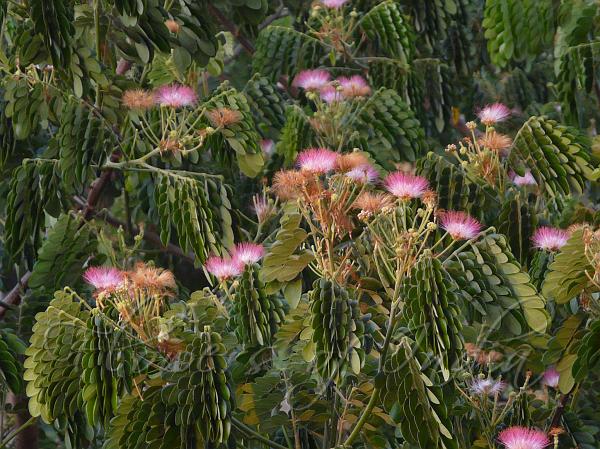|
| Rain Tree |
|

|

| File size | 1576374 |
| Original date | 4/7/08 6:22 PM |
| Resolution | 2048 x 1536 |
| Flash | Flash did not fire, auto |
| Focal length | 42.2mm |
| Exposure time | 1/80s |
| Aperture | 3.6 |
| Focus Distance | |
| Metering Mode | Multi-segment |
| Camera make | Panasonic |
| Camera model | DMC-FZ18 |
| Sensor type | OneChipColorArea |
|
|
|
Photo: Dinesh Valke |
Botanical name: Samanea saman Family: Mimosaceae (Touch-me-not family)
Synonyms: Albizia saman, Acacia propinqua, Mimosa saman
Synonyms: Albizia saman, Acacia propinqua, Mimosa saman
Large, handsome and spreading, the Rain Tree is easily recognised
by its umbrella like canopy of evergreen, feathery foliage and puffs
of pink flowers. It is frequently planted in groups or as an avenue
because of its ability to keep its symmetrical conformation in spite
of prevailing winds. It is a tree of rapid growth, brought originally
from Central America to Sri Lanka and forwarded from there because it
was considered to be a tree of great value for railway fuel. It often
reaches a height of 27 m. and the strong, spreading branches may be nearly
as long. The bark is dark grey, often bearing horizontal weals and the
trunk frequently branches quite low down. From March to May and again
towards the end of the year the green canopy is dotted all over with pink
and white. During the rest of the year, too, there are usually quite a
few flowers to be seen. The flowers appear like round, silken tufts, but
actually each flower stalk bears one central and a surrounding circlet of
florets, up to twenty in number. Each has a tube-shaped calyx and a tiny,
yellow-lobed, crimson trumpet; bunches of long stamens, half pink and
half white, protrude from each. The long, heavy leaves are twice pinnate
and each pinna, of which there are four to eight pairs, bears from three
to seven pairs of leaflets. These are oval and have no stalks, becoming
larger and more curved towards the end. on its thickened base so that
the leaves all lie sideways. In Malaysia this drooping of the leaves is
considered to portend rain and is the explanation of the name Rain Tree,
Hujan-hujan meaning "rain", but in India it is believed that the name was
given because of a curious habit possessed by the tree of intermittently
spraying the ground beneath with moisture. Later it was discovered that
this was caused by multitudinous minute insects. The fruit is a fleshy
pod, sweet to the taste and much relished by squirrels, horses and cattle.
| Identification credit: Tabish | Photographed in Maharashtra. |
• Is this flower misidentified? If yes,